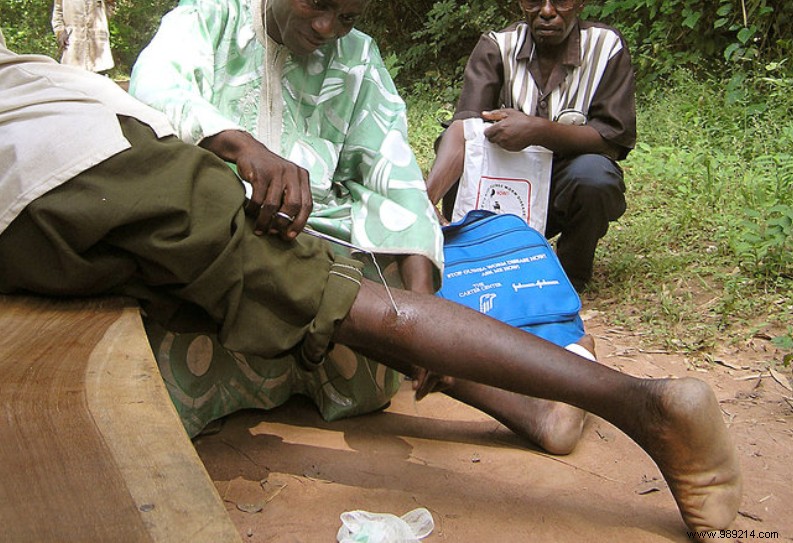Recently, a Vietnamese hospital announced that it had treated a patient infected with a very rare parasitic worm:Medina filaria. The man had painful skin lesions on his legs and arms, something doctors had never seen before.
In an article published by the local daily newspaper SaiGon Giai Phong on June 7, 2020, the National Hospital for Tropical Diseases in Hanoi (Vietnam) reported the very surprising case of a 23-year-old man from Yên Bái province (northeast). This patient suffered from the presence of abscesses in the legs , which then spread to the arms. For several days, the man alternated episodes of pain and intense fatigue.
Finally, the doctors, since the abscesses on the hands, removed no less than five “rare intestinal worms” . However, their length was rather impressive, ranging between 30 and 60 centimeters ! According to the doctors, this kind of case is unique to Vietnam and this is no coincidence. Indeed, the worm in question had never been seen in the country.
Vietnamese doctors have managed to identify the culprit:the Medina heartworm (Dracunculus medinensis) . More commonly known as "guinea worm", this one is almost extinct. In the mid-1980s, there were about 3.5 million cases worldwide . In 2019, a few African countries such as Angola, Cameroon, South Sudan and Chad listed a total of 53 cases. Thus, the presence of this parasitic worm in Vietnam seems very surprising, so experts are currently conducting the investigation to verify its authentication.

Discovered in 1758 by Swedish naturalist Carl von Linnaeus, Guinea worm is responsible for dracunculiasis , an amazing tropical disease. Infection of humans occurs through consumption of stagnant water (e.g. ponds) or shellfish in which worm larvae are present. Then, the larvae arrive in the digestive tract and then migrate to the subcutaneous tissue via the intestinal wall.
When the worm becomes an adult, it moves under the surface of the skin, most often along the legs and feet. In addition, you should know that this parasite does not forget to relaunch the contamination cycle . Indeed, when the infected person is in contact with water, the worm pierces the skin and lays eggs outside!
According to a publication by the World Health Organization (WHO), the Dracunculus medinensis can measure up to 80 cm long for a diameter of 2 mm . Guinea worm disease is rarely fatal but the disease is very painful. Furthermore, the disease process can be very long since the first worms generally begin to emerge one year after infection.